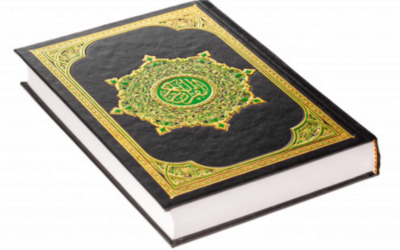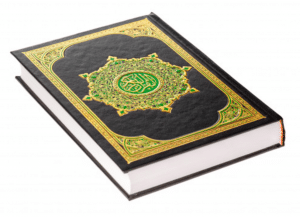A glossary of Buddhist terms:
Aggregates – Ever changing physical and mental forces or energies which at any given moment combine to make up what we call “persons” or “objects.” Buddhism teaches that what we falsely assume to be a single person that endures over time is, in fact, nothing more than an ever-changing combination of five aggregates. Those aggregates are “matter” (the four elements of earth, fire, air, and water), “sensations,” “perceptions,” “mental formations,” and “consciousness.”
Anicca – Impermanence. The temporary and fleeting nature of all things. Buddhism teaches that Anicca is one of the three marks of all existence, along with “Anatta” and “Dukkha.”
Anatta – Literally “no Atman.” The Atman is the Hindu concept of a permanent divine self that is reincarnated from one life to the next and is an expression of the impersonal, divine essence of all things. Buddhism denies there is any such thing, and indeed extends this teaching to the denial that any person or object has any enduring identity, soul, or self from one moment to the next. Buddhism teaches that anatta is one of the three marks of all existence, along with “Anicca” and “Dukkha.”
Arhat – Literally means “worth one.” One who has reached enlightenment and liberation from the cycle of rebirth. One who has fully realized Nirvana. The arhat is upheld as the ideal in Theravada and other Hinayana Buddhist schools.
Bodhisattva – One who has the essence of nature (sattva) of wisdom or enlightenment (bodhi). The term was occasionally used in early Buddhism to refer to one training to become a Buddha. In Mahayana Buddhism, it came to represent the ideal of one who reaches enlightenment but remains in the cycle of death and rebirth to teach enlightenment to others rather than transcending to Nirvana.
Bodhi Tree – Tree of Enlightenment. Buddhists believe that Siddhartha Gautama sat under a tree in determining meditation for a night and came to his enlightenment and became the Buddha, and this tree is often referred to as the Bodhi tree. This story is central to the Buddhist narrative and is referred to often.
Buddha – Enlightened one. The term can refer specifically to Siddhartha Gautama, the founder of Buddhism, or can be used more generally to refer to a person who has obtained full enlightenment and Nirvana. In Mahayana Buddhism, Buddha can also be used to the eternal principle of enlightenment and supposed nature in all things that inclines them toward enlightenment is often called the Buddha-nature.
Dharma – The word is used in two distinct senses in Buddhism. In the first and primary sense of the word, Dharma is the teaching of enlightenment and the path to Nirvana. The Dharma is the message of Buddhism. The word “Dharma” is also occasionally used in Buddhist sources, however, to refer to essential phenomena that compose apparent reality, such as objects and persons.
Dukkha – Generally translated “suffering.” Buddhism teaches that because everything is impermanent, even things we enjoy are dukkha because we will love them. All of life is tainted by dukkha because it is transitory. Nothing can fulfill, and nothing can last, so all are suffering. Any desire for or attachment to anything is dukkha. Buddhism teaches that dukkha is one of the three marks of all existence, along with “Anatta” and “Anicca.”
Hinayana – Literally means “small raft” or “lesser vehicle.” It is the general title for the schools of Buddhist thought that emphasized intense, disciplined self-effort and full-time, vocational monasticism in pursuit of enlightenment and Nirvana, and thus was seen as a restrictive way attainable by a relative few, in contrast to Mahayana.
Karma – The law or force by which one’s actions in this life have impacts on future lives. It is the chain of cause and effect by which the cycle of birth, death, and rebirth is possible even without any enduring soul or essential self.
Mahayana – Literally means “large raft” or “greater vehicle.” It is the general title for schools of Buddhism that arose several centuries after Buddhism’s beginnings and emphasized the availability of enlightenment to the masses, even to those outside of the monastic discipline and living ordinary lives of family and vocation. Mahayana tends to put greater emphasis on the help of forces outside one’s self in contrast to the older Hinayana focus almost exclusively on self-discipline.
Nirvana – Literally means “to blow out,” like the extinguishing of a fire. Nirvana is used in two related senses. One who reaches full enlightenment in life so as to be free of any sense of self and personal identity and has no attachment to or desire for anyone or anything can be said to have, in a sense, reached a state of Nirvana. When such a person dies, he will be free from the cycle of birth, death, and rebirth. They do not continue existing as an individual self in any sort of heavenly state, but rather transcend to the interconnected, indistinct, and indescribable reality of all things as they really are.
Pali Canon – The official collection of traditional teachings and sayings of the Buddha as preserved in the Pali language by the Theravada school of Buddhism. They represent the oldest testimony to anything like a comprehensive presentation of Buddha’s teaching.
Samsara – The cycle of birth, death, and rebirth. In Buddhist thought, samsara is not a district individual personally experiencing multiple lives, since there are not distinct persons that endure even though the moments of one lifetime much less on into the next. Instead, the rebirth of samsara means that karma carries the effects of human and animal actions from one life on to another life. When a creature is born, it inherits the karmic debt of some previous creature’s life. When a creature dies, its karmic debt is carried onto another life. This perpetuates suffering until enlightenment breaks the cycle.
Sangha – It is the Buddhist community or brotherhood. Traditionally this refers to the monks or nuns pursuing enlightenment while living in the same monastery as one another, though the Mahayana tend to include lay practitioners in the Sangha, and different Buddhist schools define the precise role, meaning, and significance of the sangha in a variety of ways.
Sutra – Alternately rendered “sutta.” It is collected teaching, generally attributed to the Buddha.
Tanha – Literally means “thirst.” In Buddhism, this refers to our desires and cravings, all of which lead to suffering because the things we desire are impermanent and therefore ultimately unfulfilling.
Tantra – Esoteric, mystical practices and rituals meant to access spiritual energies and forces to aid in the quest for enlightenment. Such practices are discouraged in most forms of Buddhism but are central to Tibetan Buddhism and other Vajrayana schools.
Theravada – Literally means “the school of the elders.” The Theravada schools are the only group of Hinayana Buddhism to endure down to today and represent the oldest form of Buddhism that is still in practice. They are defined primarily by their devotion to the Pali Canon and the centrality of monasticism and self-discipline in their practice.
Tripitaka – Literally means the “three baskets.” The Tripitaka is the three branches of Buddhist scripture. The Sutras, containing Buddha’s teaching, the Vinaya, or the rules of discipline, and the Abhidharma, or the commentaries and other essays on Buddhist doctrine






